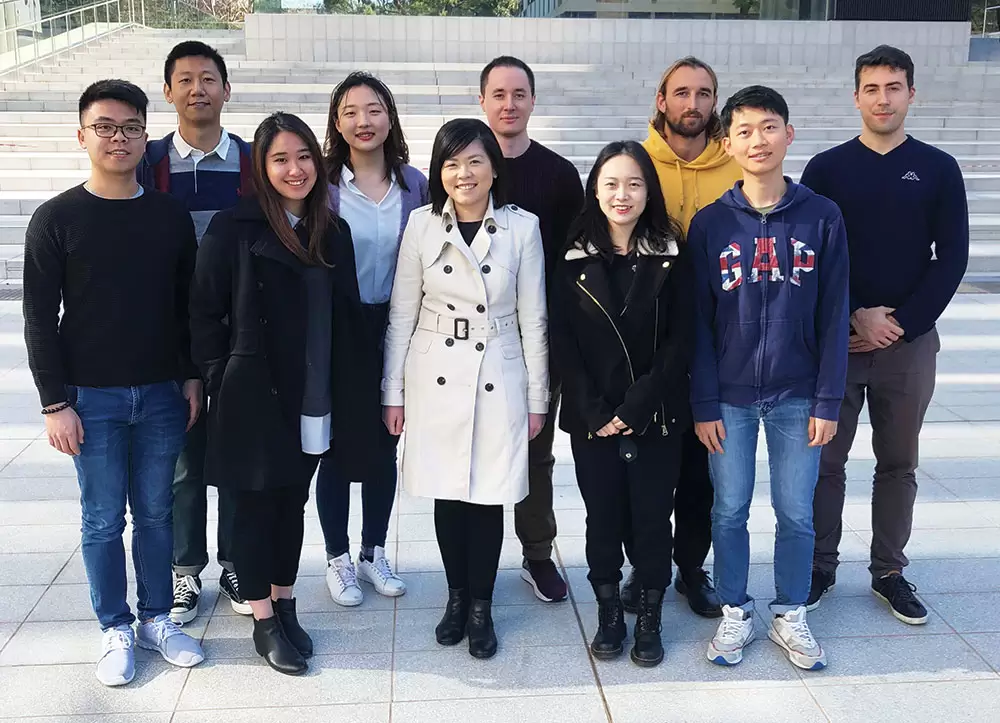Nitric oxide is a difficult gas to work with, but Rona Chandrawati hopes to make it easier to use as a treatment for everything from glaucoma to heart disease — and possibly even COVID-19.
Together with her lab at the University of New South Wales, Associate Professor Rona Chandrawati and her collaborators have developed medical implants and drug-delivery technology that can generate therapeutic nitric oxide inside the body.
Nitric oxide needs to be highly controlled to be effective. The gas must be delivered to the right place, in the right dose, and at the right time.
A chemical and biomedical engineer, Chandrawati said the technology can deliver nitric oxide directly to the site of a disease. If successful, the implants could be used to treat conditions from glaucoma to heart disease.
Delivery difficulties
Nitric oxide, an oxide of nitrogen with the chemical formula NO, has a host of therapeutic effects. It promotes wound healing, helps maintain blood pressure, prevents blood clots and plays an important role in immune response. Nitric oxide has also been shown to kill cancerous tumours in animals.
But delivering nitric oxide to the body is extremely challenging.
For a start, the gas is very short lived, Chandrawati said.
“If you deliver it to our body — it disappears in blood and tissue in seconds,” she said. “That means that it’s only effective in the area near the source of delivery.”
Chandrawati and her team hope to overcome these challenges with implants that can generate nitric oxide inside the body. These are coated with a chemical that acts as a catalyst, setting off a reaction that converts naturally occurring substrates in the blood and tissue into nitric oxide.
“The implantable device is located at the site of the disease, and then the nitric oxide will be released from the device,” Chandrawati said.
“It will be generated locally.”

Much of Chandrawati’s research to date has focused on creating implants to treat glaucoma patients.
“We showed that the nitric oxide generated from the implant in the eye can effectively reduce eye pressure, which is beneficial,” she said.
Chandrawati is currently investigating whether the coating can be applied to cardiovascular stents to relax blood vessels. The team is also exploring if similar technology can be used to deliver other signalling molecules beyond nitric oxide.
Long-term clinical use
When Chandrawati was nominated for create’s Most Innovative Engineers list in 2020, the coating on the nitric oxide implant was based on enzymes. But enzymes are affected by temperature and can easily denature.
Instead, Chandrawati has developed a new inorganic coating made from metal oxide that she hopes will last longer in the body.
“The idea is that this coating can be as stable as possible and can generate nitric oxide that is sufficient for long-term clinical use,” she said.
“So that we don’t have to have patients having to have revision surgery to remove the implant and to replace it with a new one.”
The improved coating will also be cheaper and easier to store.
“If we can make the coating as stable as possible … at room temperature, then it can be used whenever surgery is needed,” Chandrawati said.
Chandrawati stressed the implants are in the development stage, with clinical trials and a scale-up of manufacturing needed ahead of any commercialisation of the technology.
“Different organs in our body react differently to materials and interact differently,” she said.
“We need to ensure that they last for a long time and it causes a protective effect. It’s quite a long pathway.”
In future, Chandrawati hopes to test anti-thrombotic applications, to find out if the improved coating can remove blood clots that can form around cardiovascular stents.
“We want to show the coating creating nitric oxide [can] prevent blood clot formation,” she said.
Chandrawati is also interested in revisiting her glaucoma research to see if the improved coating works better there.
She’s also looking to create a wound-healing patch.
“The [bandage] that you use to cover a wound can also be coated with this [catalytic] material, so it can generate nitric oxide,” she said.
COVID-19 killer
Adding to nitric oxide’s many benefits, the gas has potent antibacterial and antiviral properties. It was used to treat patients in the 2003 SARS epidemic, and research published in 2020 found nitric oxide can kill SARS-CoV-2 — the virus that causes COVID-19.
Chandrawati is not currently researching COVID-19 — one limitation being that her chemical engineering lab isn’t set up to test a deadly virus. But the possibility shows the huge potential for her nitric oxide-delivering technology.
“It’s a molecule with amazing properties,” Chandrawati said.
Reaction time
Chandrawati’s medical implants use an innovative zinc-based coating (pictured above) to deliver therapeutic nitric oxide gas to the site of a disease.
Once inside the body, the coating acts as a catalyst. It kicks off a chemical reaction that causes S-nitrosothiols — a substrate that is readily available in blood and tissue — to decompose. This produces nitric oxide gas.
The coating can be applied to existing implants, such as cardiovascular stents, or used in new applications.
Under ideal conditions, the technology has the potential to deliver “non-stop” therapeutic gas to where it’s needed most.
